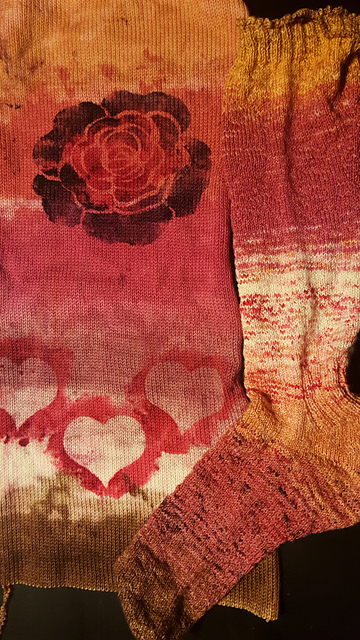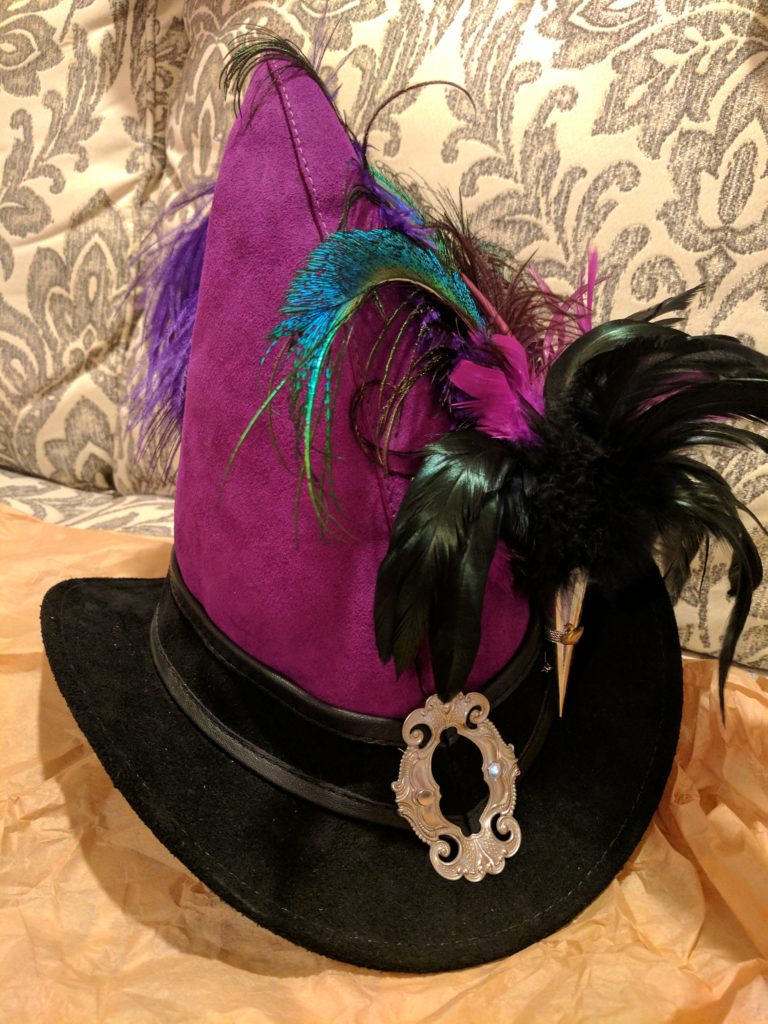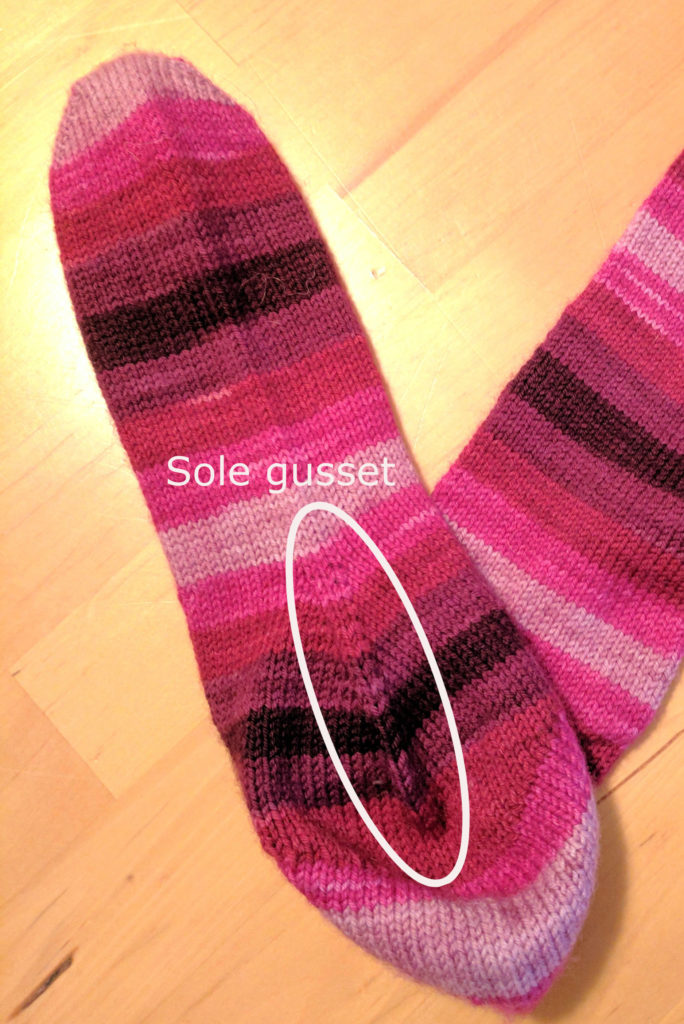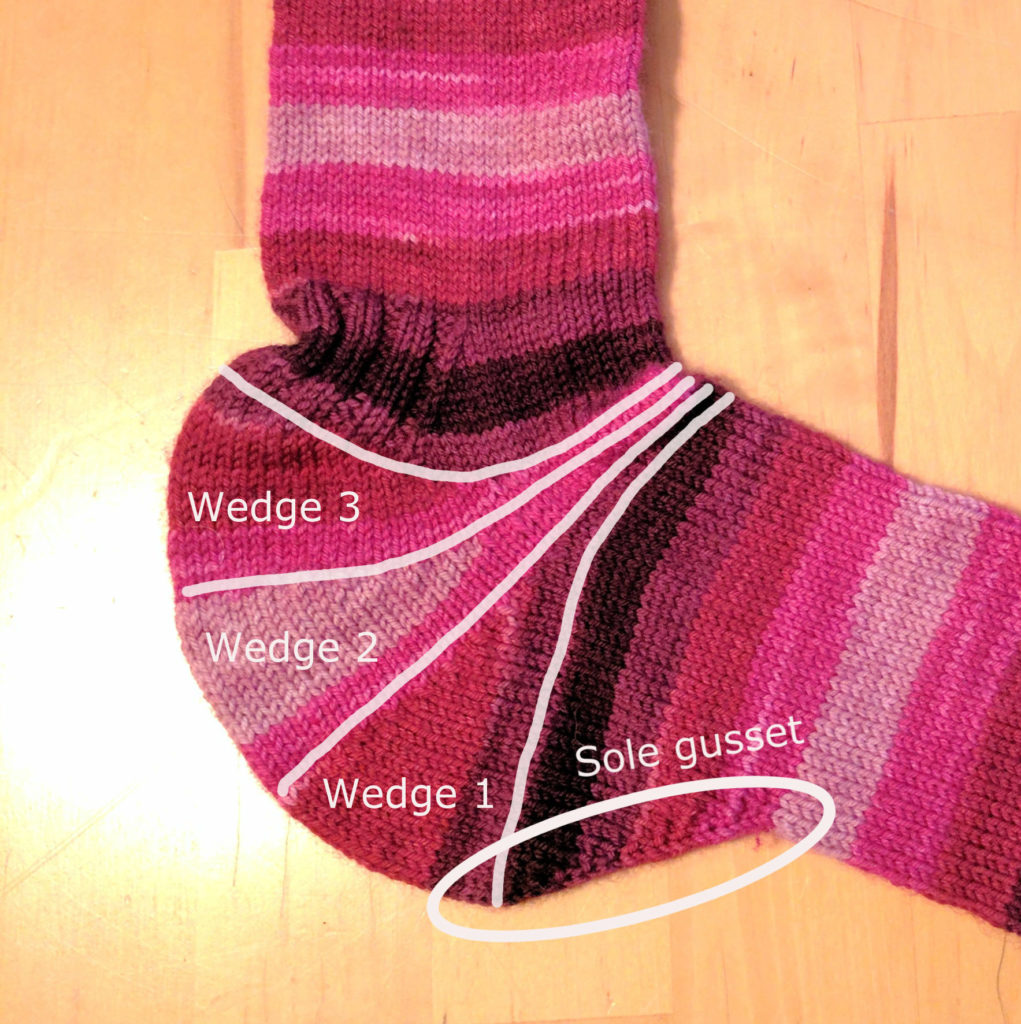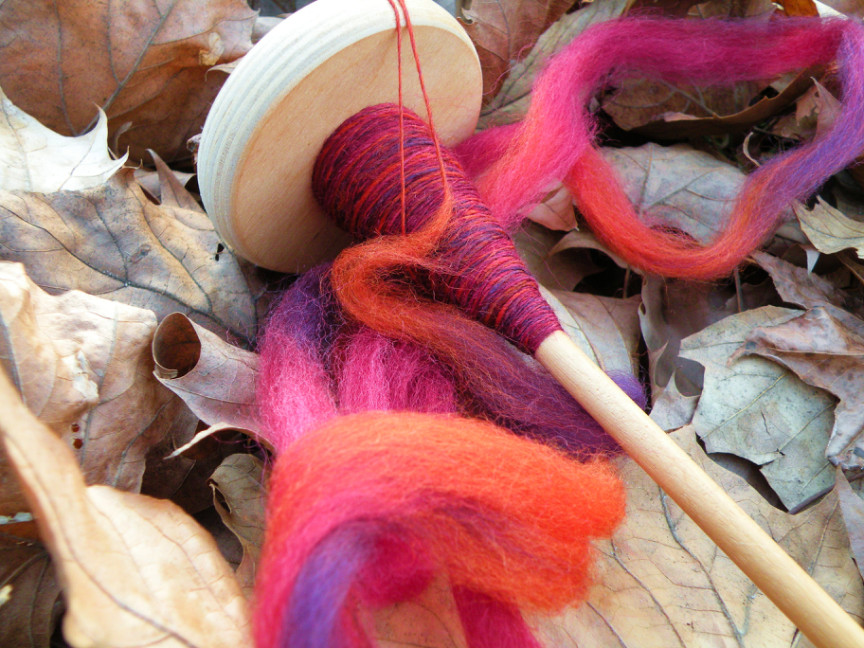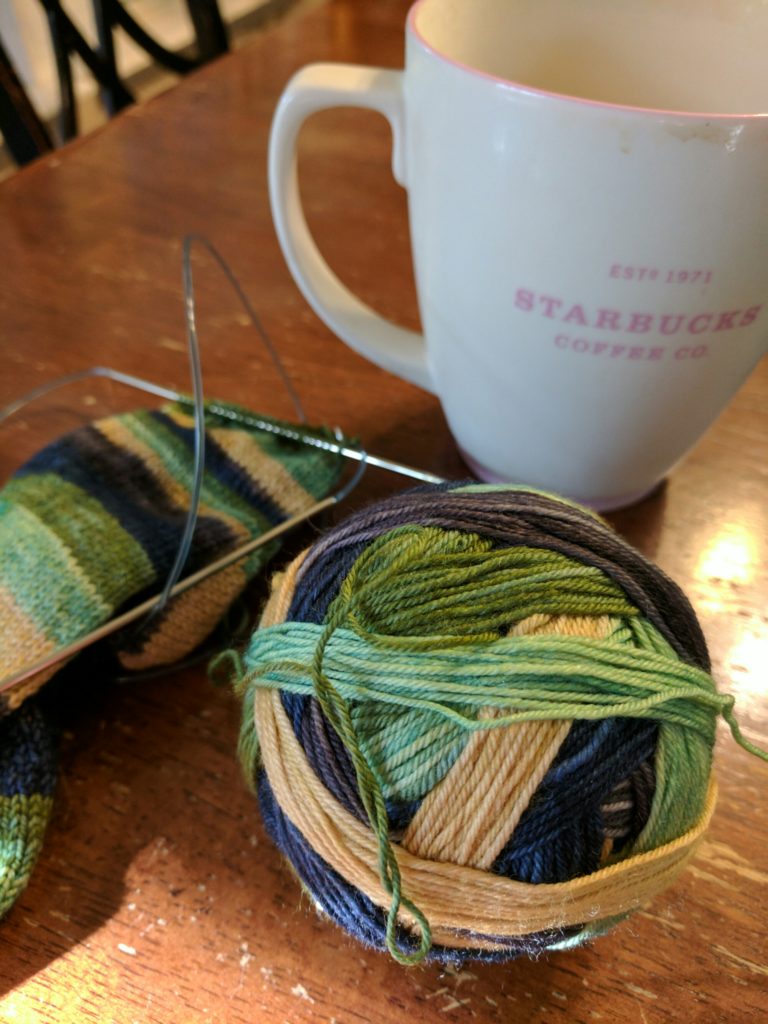A friend of mine learned to drop spindle this past weekend, and now she’s got a spindle full of yarn. So what does she do now?! Well there’s plying, of course. But it’s intimidating for a new spinner to be sitting there with their first yarn on their shiny new spindle. How do they get it from spindle to plied yarn without disaster striking and making a mess of the yarn prettiness? Let’s take a look and figure that out!
Most spinners start with just one spindle. And that’s ok! We can work with that. The thing is that you need at least two sources of single yarn in order to ply it into a multiple (We’ll be looking at two-ply here.) ply yarn.
First off, some spinners prefer to allow their singles to sit for a bit, at least overnight, before plying. I tend to do this myself, often from laziness, but it’s something to consider. I feel that the singles settle down a bit and lose a bit of their energy when they’re allowed to rest. Don’t worry, that energy will come back once your yarn is set and will make for a delightful hank of yarn.
The quickest way to get pliable singles off of one spindle is to wind your single directly from your spindle into a center pull ball on a ball winder. Just hold the spindle in one hand and as you wind the ball winder let the spindle roll in your hand as the single winds off of it. Then take one end of the single from the center of the ball and one end from the outside of the ball, knot them together, stick that on the hook of your spindle, and spin your spindle in the OPPOSITE direction from which you spun the singles to twist the two singles together. Use the spindle just like you did when you were spinning: ply some yarn, store it on the spindle shaft, ply some more, store some more. (A quick interjection here about how much twist to put in your yarn as you’re plying it. I tend to over ply a little bit because I like the look of a tightly plied yarn. This usually works out nicely for me after the yarn has been set. But shoot for plying your yarn until the yarn can hang in a nice curve without twisting up too much onto itself. You’ll need to play with it and find your own plying point!) Then you’ll reach the center of your single and have a length of yarn that’s half the length of your single!
Sometimes this method can get fiddly, especially with the thinner spots of your single where the yarn may have more twist in it. One thing that may help is to put a toilet tissue cardboard on the shaft of your ball winder and wind the single onto that. Leave the cardboard in the ball of yarn as you ply from it.
Another good way to control the single is to wind a plying ball. Go ahead and wind your single onto the ball winder, cardboard or not, whatever works for you. Again, take the two ends, one from the inside of the ball and one from the outside. Wrap those two ends, held together, around a tennis ball. Or around a(nother) tissue cardboard. Or around a piece of PVC or around a tightly wadded up ball of paper. Whatever you can find. Abby Franquemont uses a coin! Watch her video on plying balls here: https://www.youtube.com/watch?v=jDOj6-s44pU The goal here is to wrap the singles, held together, around something that will hold that tension for you. Using this method will allow you to slide your fingers down the singles, putting a bit of tension on them and feeling for little pig tails and straightening them out as you go.
If you don’t have a ball winder, no biggie! Wind a ball of single yarn by hand directly from your spindle. Now your spindle is free to be filled again! Fill it up with more singles, and wind another ball of single yarn. Now take these two ball of singles and either ply directly from them, or wind a plying ball from them. Your two balls of singles will be different lengths, so just set aside your leftover length of single yarn and use it for something else. Don’t forget to ply in the OPPOSITE direction from which you spun the singles, of course!
Now you have a lovely, two-ply yarn on your spindle. Now what do you do with *that*? Now the yarn needs to be set. Setting the yarn will get it nice and evened out so that it’s ready to be knit with. Everyone seems to have their own setting ‘recipe’. Imma gonna tell you mine. It’s worked for me pretty well so far, but of course do your own thing as you collect more knowledge and have more experience with making your own string. 🙂
The first step is to get the yarn into a hank. You can use a niddy noddy (https://preview.tinyurl.com/ybkuunc5) for this, or maybe wrap the yarn around your thumb and elbow. Here’s a great video with another technique that uses other body parts: https://www.youtube.com/watch?v=lx-fzUvlhg0 Regardless of how you do it, you need to get the yarn into a nice round skein. Tie the two ends of the skein together, then put to more ties on the skein so that it doesn’t get tangled in the bath. I soak most of my yarns in the hottest water from my tap with just a couple of drops of castile soap in it. I’ve used dishsoap in the past as well, but you don’t want enough to make lots of bubbles. Then in goes the hank of yarn. I usually leave it overnight, but that’s probably a bit of overkill. I’m going to say leave it there for at least two hours. What you’re looking for is for the water to really get soaked up by the yarn. Put a towel on the floor, remove the yarn from the water, and place the hank nicely laid out onto the towel. Fold up the bottom half of the towel so that the hank is covered, and roll the towel up with the skein inside of it. Now step on the towel to squish out as much of the water into the towel as you can. Then just hang your skein up over the shower rod or something. Let it dry, then enjoy!

